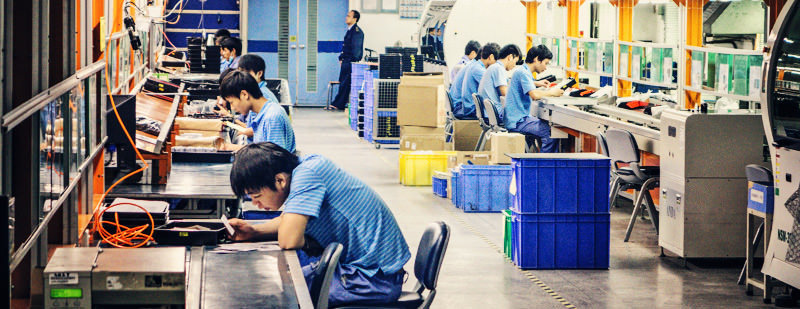Dragon Innovation Helps Startups with Manufacturing

I met up with Herman Pang, President and co-founder of Dragon Innovation this morning at Australia Dairy Company in Hong Kong (“no connection to Australia whatsoever”, according to Herman), for the best scrambled egg breakfast in Hong Kong and a chat about hardware startups.
It doesn’t take much poking around in the area of hardware startups to come across Dragon Innovation. Practically every venture investor tracking the space or hardware startup on Kickstarter has at least heard about Dragon. They’re the ones that suggested to the Pebble guys to try crowd funding after traditional fundraising conversations didn’t pan out.
We’ve written before about the forces enabling an explosion of hardware startups (low cost components, crowd-funding, rapid prototyping tools, 3d-printing, China manufacturing), but there’s another side to the story: manufacturing. Finding the right factory, sourcing components, designing products for manufacturability, overseeing a manufacturing process and negotiating deal terms with a factory together constitute a formidable gap between a having an innovative design and having a product that’s ready for sale.
That’s where Dragon Innovations comes in. They got their start over four years ago when Scott Miller (Dragon’s CEO) and Herman left their jobs at iRobot, where they had built the company’s Far East operations. Given iRobot’s origins at MIT and success in hardware manufacturing, Scott and Herman started getting inquiries handed down by iRobot’s CEO from MIT students seeking advice on manufacturing their inventions. As the pace of such inquiries increased it became obvious there was a trend.
Herman says they’ve seen a steady increase in clients and as they’ve grown they’ve had to become selective about who they work with. Though they’ve worked with Pebble, Leap Motion, Makerbot, Romotive and other well-known hardware startups, they’re also working with quite a few pre-launch hardware startups as well, including at least one bootstrapped, single-person startup with a patented invention. Most of their clients have funding through venture capital or crowd-funding.
I asked Herman how startups should go about picking a factory. He said the most important factor is finding a factory with experience producing similar goods, but that using factories that are trustworthy and have a good track-record and history is important too. He said it’s also important to look at the factory’s client list and to pay attentino to what they’re actively producing as indicators of their abilities.
For their part, Herman said that factories also evaluate the clients and projects they’ll take on, looking at factors such as the track record of the team that’s involved, the financial backing of the company, evidence of a hot product and any distribution contracts that might be in place.
We talked a bit about IP protection and I mentioned to Herman that I counted at least 8 different Roomba clones at CES this year. He said it’s important to work with a factory that has good track record and, as a precaution, to keep key software components out of the factory, for example by using encypted bootloaders and never sharing software source code with a factory. (Editor’s note: beyond that, you could orient your product such that you don’t care if the hardware is copied, by designing and emphasizing the connected service elements. Full post on IP issues coming later.)
So should startups consider working with a company like Dragon Innovation instead of going it alone? Probably, yes. For pre-Kickstarter companies, working with Dragon Innovation means some additional up-front costs before knowing if the campaign is a success. But that could be money well-spent given the many things that could go wrong down the road if you haven’t engaged with a factory up-front (ship delays, quality issues, cost overruns). Indeed, many Kickstarter “successes” we’ve talked to had to completely redesign their products in order to become suitable for manufacturing and burned more time and money than they would have if they had engaged in a more efficient process with Dragon Innovation earlier in their lifecycle.
But what does this say about the dream of using rapid prototyping technologies such as Arduino and 3D-printing and using crowd-funding to validate the market for a new product before spending on manufacturing? The reality is that establishing prices and launching a funding campaign without knowing true costs — which can only be known by working with a factory and having a manufacturable design prepared — is a risky way to launch a product. Heman did say that early on in the company’s history they experimented with sharing up-front costs and splitting the upside but added that when things go really well, customers are happy paying the monthly retainer and not having to pay a per-unit royalty.
![Dragon Innovation Helps Startups with Manufacturing [Hack Things]](https://sloppy-joe-app.imgix.net/www/hackthings-logo.png?w=716&auto=format)